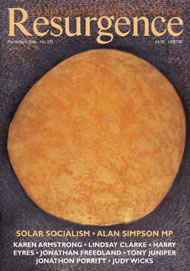ARTISTIC WAYS OF thinking are very different from academic ones, so it takes an open mind to bring the two worlds together. However, the result can bring insight and illumination. Which is why, when St John's College, Oxford was left a substantial bequest, the Fellows used part of the money to establish an annual Artist-in-Residence bursary, open to visual artists in any medium.
Designer and jeweller Wendy Ramshaw was last year's Artist-in-Residence. Her pieces tend to be very small - rings and brooches - or very large - gates and staircases. Their dimorphism of scale reflects her self-confessed Alice in Wonderland worldview. Ramshaw likens her role of artist to the character of Alice: a bright, impressionable child trying to make sense of the world around her. The Alice metaphor in this case gathers fresh meaning. Oxford was where Lewis Carroll lived, and when Ramshaw arrived there she found Alice waiting for her, seemingly just around the corner in each of the city's five fantastic museums.
During the ten-week residency, Ramshaw spent most of her time in the museums, looking and absorbing visual ideas. "An artist working alone in the studio doesn't see much of the outside world," she explained. "It takes a great deal of time to prepare studio work for exhibition and you're so busy that simply wandering around museums becomes a luxury when it could be the mainstay of the work." The St John's residency is completely open-ended - nothing is demanded or expected and artists are given a free space to act and react. This gift of uncommitted time is priceless.
Ramshaw enjoyed contact with students, but gave the residency a more personal focus, using it to gather source material. Her main find was a 16th-century theodolite, an early surveying instrument, which she discovered in the Museum of the History of Science. The instrument had once belonged to St John's and its design featured a circle within a square, a recurrent motif in her work. By abstracting the pattern, Ramshaw produced some preliminary designs for a gate that could be used for the entrance of a new quadrangle which the college is planning. She also collected ideas for a sundial featuring water in homage to St John the Baptist (the college's namesake), and the possibility of a paper necklace using imagery from Uccello's painting The Hunt in the Forest, which is in the Ashmolean Museum.
Transformation of one thing into another entirely different object is the lifeblood of Ramshaw's practice. Nowhere was this more apparent than in her Room of Dreams, shown at the Scottish Gallery in Edinburgh during the 2002 Festival. This installation of tables and cabinets filled with objects and jewellery encapsulated her artistic vision. Alice was a strong influence, as were narratives drawn from fairytales and dreams. Some of the themes were explored further in Prospero's Table, shown in the same gallery in 2004. This wooden table top with a glass cover, divided into compartments and supported on a perspex plinth, contained items that might have belonged to the magus from The Tempest. One of the unifying ideas was metamorphosis by a "sea-change into something rich and strange".
The "thrice transformed" necklace made from sea-washed glass echoed this change - once upon a time the glass had been part of a bottle, then it was broken and smoothed by the sea before Ramshaw found it, cut the glass into cabochon-shaped stones and set it in gold. Through the magic of art and the alchemy of nature a cheap, common material used for a functional purpose was changed into a precious, decorative item.
Transformation can be a slow process. Ramshaw views the brief period of the St John's residency as the beginning - a keyhole or a looking-glass into a new world whose influences she is only starting to explore.







